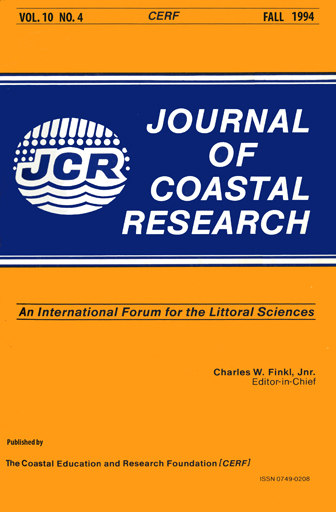Landscape Classification and Terminology for Marsh III Deficit Coastal Lagoons
Keywords:
Coastal barriers, sea level change, coastal marsh, barrier island, storm surge, beach ridge, deltaAbstract
Marsh development in coastal barrier lagoons is governed by sea level fluctuation, sediment input and the antecedent character of the lagoon floor. Shoes associated with the mainland and barrier island provide a variety of different platforms for marsh colonization. During the Holocene transgression, low marshes along the basin boundaries tended to be submerged into the lagoonal bays, whereas high marshes tended to spread over newly inundated surfaces.
Along the mainland side of lagoons, the distribution of fringe marshes is primarily related to the complexity of terrestrial topography. When mainland boundaries are relict beaches, then mainland fringe marshes tend to be linear and coast parallel. However, when the mainland shores form over mature drainage topography, aerated shorelines are produced with a variety of different environments for marsh colonizations. The main marsh sites along the mainland are in stream valleys, on interfluves, at headlands, around hammocks and on intertidal islands. Maintenance of marshes is related to the relative rate of sea level rise with respect to the rate of sediment accumulation on marsh surfaces.
The configurations of marshes in the centers of lagoons are primarily dependent on the submergence of locally high topographies and the degree to which sedimentation is able to offset submergence.
Fringe marshes along the backbarrier side of barrier islands are less dependent on antecedent topography. Cross island sediment transfer is the main process providing platforms suitable for marsh colonization. The main sites for backbarrier marsh colonization are on washover fans, storm surge platforms, swales between beach ridges, intertidal portions of flood deltas and antecedent highs.


